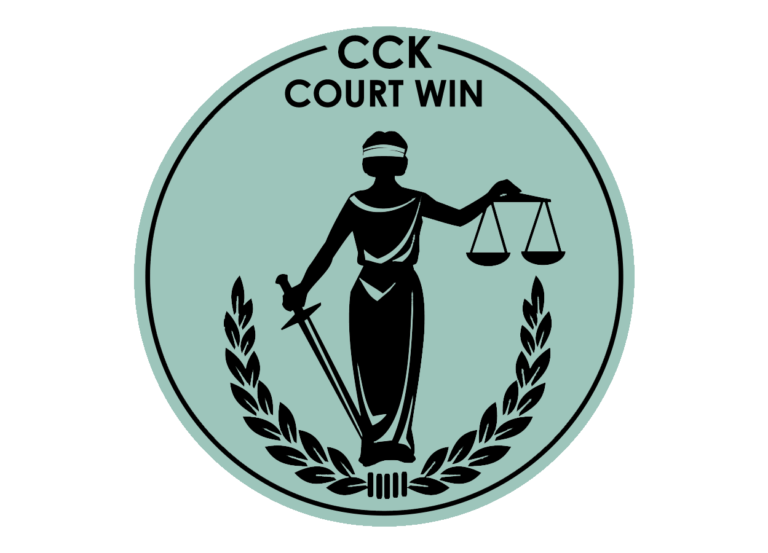Court Finds Legal Error in Board’s Decision Denying Increased Ratings for Veteran’s Radiculopathy of the Bilateral Lower Extremities

CCK Law: Our Vital Role in Veterans Law
Radiculopathy of the Bilateral Lower Extremities: Favorable Evidence of Record
The Veteran served on active duty in the United States Army from February 1993 to February 1997 during which time he worked as a parachute jumper and sustained a low back injury. He later became service-connected for a low back disability. In February 2007, the Veteran was also diagnosed with radiculopathy of the right lower extremity. He subsequently filed a claim for this condition as secondary to his service-connected low back disability. In September 2007, the Veteran attended a VA examination in which the examiner noted that his condition had a significant effect on employment involving missed work, late arrivals, and early departures. Two years later, the Veteran was diagnosed with radiculopathy of the left lower extremity as secondary to his service-connected low back disability as well. Again, the examiner reported a significant effect on his occupation, including problems with lifting and carrying, decreased strength, lower extremity pain, and pain in sedentary positions. Shortly after, the Veteran was granted service connection for his radiculopathy of the bilateral lower extremities and assigned a 10 percent disability rating for each. He continued to appeal for higher ratings.
In November 2013, a VA examiner noted that the Veteran had severe intermittent pain and mild numbness in both legs, along with a moderate severity of radiculopathy on both sides. Further, the examiner again opined that his disability negatively impacted his ability to work as a result of recurrent absenteeism due to the increasing frequency and severity of his pain. A year later, the Board increased the Veteran’s disability ratings to 20 percent each. The Veteran attended another VA examination in February 2016 in which he reported experiencing severe pain in his bilateral lower extremities, which usually lasted for 3-4 days, but sometimes lasted for 2-3 weeks. The examiner stated his bilateral numbness, paresthesias, and intermittent pain were severe and there was evidence of muscular atrophy on his left side accompanied by left foot drop. However, the examiner found that the reflexes in his bilateral knees were normal.
In July 2016, the Director of Compensation Service evaluated the Veteran’s case and found that entitlement to increased ratings for radiculopathy of the bilateral lower extremities was warranted, both under the current rating schedule and on an extraschedular basis. Specifically, there was evidence of an exceptional or unusual disability picture, such as, marked interference with employment that rendered the schedular rating criteria inadequate. Ultimately, the Director opined that the left lower extremity warranted a 40 percent disability rating, and the right lower extremity warranted an additional 10 percent rating on an extraschedular basis. VA assigned a 40 percent disability rating for the left lower extremity and a 30 percent disability rating in August 2016, based on the Director’s opinion. The Veteran appealed for higher ratings to the Board of Veterans’ Appeals.
Board finds criteria for extraschedular rating not met
In May 2017, the Board issued the decision on appeal that increased the Veteran’s disability ratings to 60 percent for his radiculopathy of the left lower extremity and 40 percent for his radiculopathy of the right lower extremity. However, the Board found that these individual ratings, as well as his combined 90 percent rating, fully compensated him for his average impairment in earning capacity. Therefore, the criteria for an extraschedular rating had not been met. In regards to the lower left extremity specifically, the Board found that the Veteran did not have complete paralysis of the sciatic nerve based on the examiner’s checkmarks and on the fact that there was not weakened or lost knee flexion. For the right lower extremity, the Board had previously granted a 10 percent extraschedular rating, but in the decision on appeal, the Board granted a higher schedular rating and essentially found that this replaced the previous extraschedular rating.
CCK appeals to CAVC, arguing against Board’s findings
CCK successfully appealed to the Court of Appeals for Veterans Claims (CAVC) the Board decision that denied entitlement to disability ratings in excess of 60 percent for left lower extremity radiculopathy and 40 percent for right lower extremity radiculopathy.
Radiculopathy of the Right Lower Extremity
Here, CCK argued that the Board failed to provide adequate reasons or bases for discounting the 10 percent extraschedular disability rating previously assigned. Specifically, in awarding the rating, the Board already conceded that the rating schedule did not adequately contemplate the Veteran’s symptoms and that there was evidence of marked interference with employment. CCK asserted that the Board failed to explain how his demonstrated marked interference with employment is incorporated into his now 40 percent schedular rating. Finally, CCK argued that because schedular and extraschedular ratings require different analyses, the Board essentially took away the extraschedular rating without proper process.
Radiculopathy of the Left Lower Extremity
For the left lower extremity, CCK argued that the Board erred in denying a disability rating in excess of 60 percent. CCK contended that the VA examiners did not even test the Veteran’s knee flexion and the Board did not consider lay evidence of functional loss that could be the equivalent of complete paralysis. The Veteran’s record also contained evidence of limited knee flexion and no active movement of the muscles below the knee during flare-ups, which the Board also overlooked.
Court agrees with CCK’s arguments
CCK argued, and the Court agreed, that the Board did not discuss the Veteran’s right lower extremity radiculopathy symptoms and their effects on his employment in its extraschedular analysis. Therefore, it failed to give adequate reasons or bases. The Court also agreed that for his left lower extremity radiculopathy, it was unclear as to how the Board determined there was no loss of knee flexion since the examiners did not test it. Accordingly, the Court remanded the Veteran’s case back to the Board for readjudication.
About the Author
Share this Post
